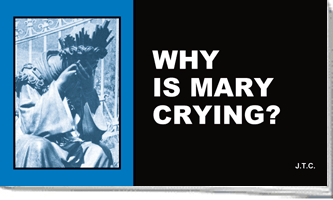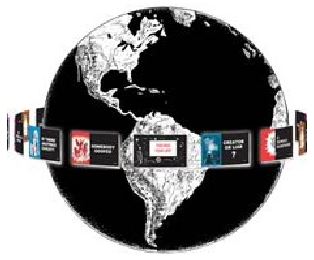Luke 1:28 Twisted To Favor Virgin Mary
How did the lowly Jewish virgin, chosen to birth the Messiah, get to be the goddess-like figure “venerated” by Roman Catholics? One of the great contrasts between Bible-based Christianity and the rest of the world’s religions is the lack of a goddess figure. The counterfeit “church” based in Rome happens to fall in the goddess-centered category.
Since the pope claims the word “Christian,” there has to be some link to the Scriptures, no matter how twisted. When questioned, they point to Luke 1:28. Protestants turn and read: “Hail, thou that art highly favoured…,” and don’t see the point.
“Of course not,” says your Catholic friend. “You have the wrong Bible.” He opens his version and reads: “Hail, full of grace….” He compounds your confusion by following up with one of your favorite verses: Eph. 2:8, “For by grace you have been saved through faith...,” (Revised Standard Version, Catholic Edition) “So, then, if we are saved by grace and Mary is ‘full of grace,’ how can she not be involved in our redemption?” he asks.
Catholic reasoning goes like this: If Mary was “full of grace,” then, since “by grace” we are saved, she must participate in the “favor” that Christ bought for us on the cross. If that is true, then she must be co-mediator (and some claim co-redeemer) with Christ. This perversion of scripture also appears prominently in the Rosary prayer: “Hail, Mary, full of grace...”
So, this is the central scripture used by the popes to elevate the lowly virgin to goddesshood as the “immaculately conceived, sinless, Mother of all nations, mediatrix,” who was bodily “assumed” into heaven upon her death —the “Blessed Virgin Mary.”
The settled opinion today in most churches is that “It doesn’t matter which Bible you read. They are all basically the same.” But this is one example of the use of the wrong Bible to shoehorn a universally pagan teaching of goddesshood into what claims to be a “Christian church.”
How do we know which is the right Bible? By history! Here we find two streams of manuscripts. Modern technology is bringing into focus details formerly either lost or purposely held secret.
One stream has a long and detailed history traceable through thousands of manuscripts back to the original apostles. The other stream has been obscured until modern technology allowed researchers a more complete look. Unfortunately, what they are finding is a trickle of bogus documents, promoted by men of dubious character.
The details are complex, but linguist and author David W. Daniels has used modern social media to chronicle his quest for the truth. His YouTube vlogs, released over the last couple of years, contain the details of his research, just as he has discovered them.
The first stream is the one that the popes were so desperate to eliminate, while preserving the results of the other stream —not for the common people, but to be held in secret to be interpreted by the counterfeit “church.”
Daniels has discovered that there are many other places where the modern Bibles slant toward Catholic teachings. Acts 8:37 is gone from many, eliminating one of the strongest verses against infant baptism. 1 Cor. 1:18 (and several other places) says we are “being saved” instead of “are saved,” as in the KJV.
In many places Jesus’s identity is reduced, as in “one and only Son” in John 3:16 instead of “only begotten Son,” as in the KJV, ignoring Galatians 4.
The magnitude of the changes can be seen in Look What’s Missing, by David Daniels, where 257 verses are listed with words removed affecting many different doctrines.
- See more articles on related topics:
- Bible Versions
- Catholicism
- Idolatry
- Prayer to Mary and Saints
Other Articles from May/June 2017:
More on Catholicism:
Products of Interest:

Why Is Mary Crying?
Devotion to Mary doesn't please her. It breaks her heart.-

Babylon Religion
224 pages
Learn how a Babylonian goddess became the Virgin Mary. An easy-to-read history of Catholicism's Babylonian origin. -

King of Kings
64-PAGE, FULL COLOR COMIC BOOK - Teaches many major Bible stories, from Genesis to Revelation.
-

50 Years in the Church of Rome
368 pages
This classic work shows how this priest began to question Catholic teachings until he became saved, and led his entire parish to salvation.



